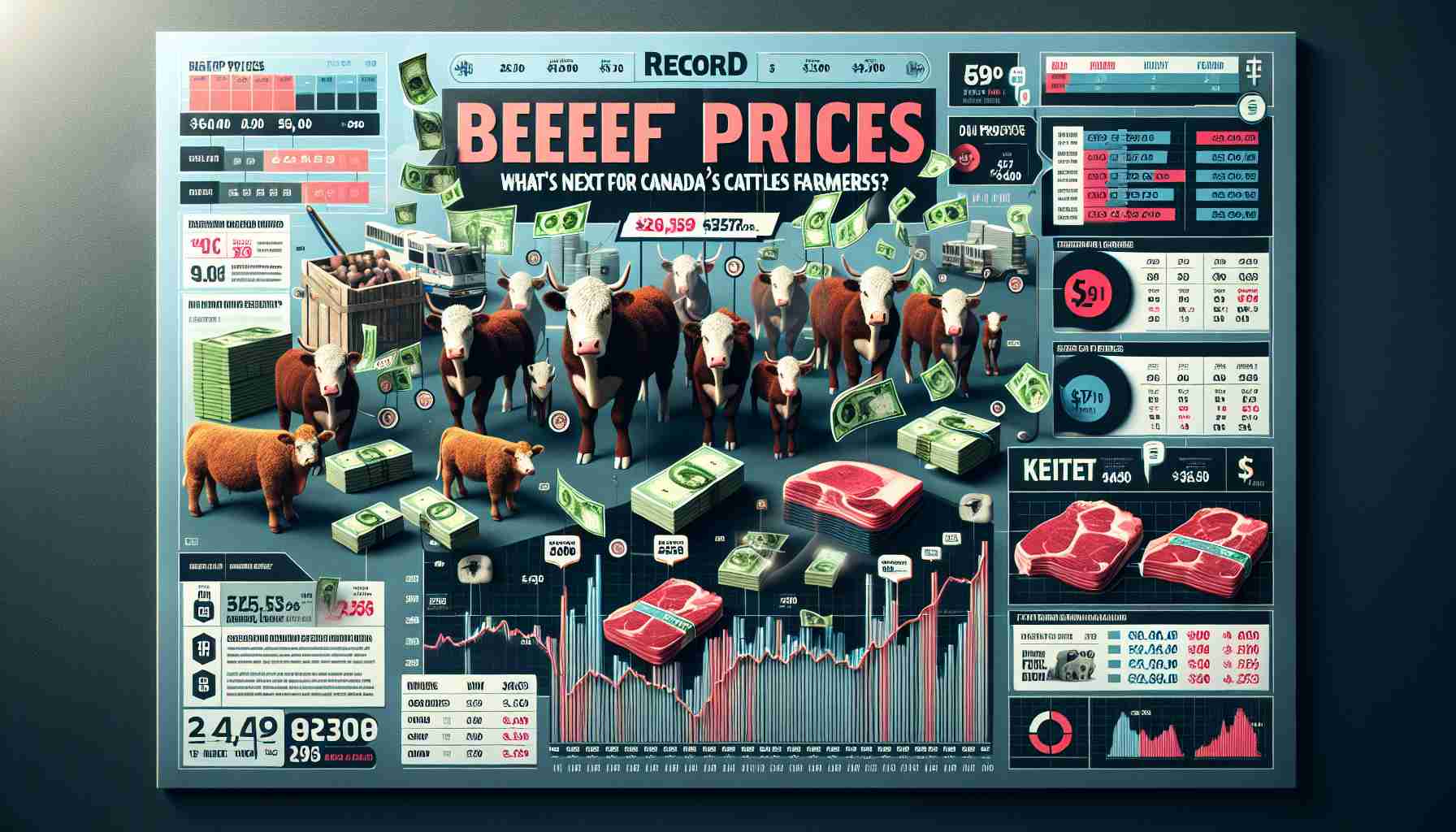Market Trends and Future Outlook
The Canadian beef industry is witnessing unprecedented price levels, presenting both opportunities and challenges for cattle producers. Despite thriving market conditions, looming U.S. tariffs introduced by the recent administration create an air of uncertainty across the sector.
According to Rick Wright, a prominent figure in the Livestock Markets Association of Canada, the start of January has shown promise with significantly high market prices. The average prices for feeder steers have been notably robust, ranging from $300 to nearly $400 per hundredweight depending on their weight class. Heifers have also seen solid values, though slightly lower than steers.
These price trends can be attributed to several factors including a scarcity of beef supply in North America, favorable exchange rates, and strong export channels. However, the prospect of tariffs poses a significant threat, as the U.S. remains Canada’s largest market for beef products.
Looking ahead, Wright emphasizes the need for adaptability. He suggests producers examine their marketing tactics and calving schedules to capitalize on favorable markets.
Moreover, while high beef prices may shift consumer perception, potentially making beef a luxury item, Wright hails Canada’s beef products as superior in safety and quality. As prices soar, the key for producers will be maximizing production efficiency to navigate what could be a transformative period for the market.
Beyond the Beef: Societal and Economic Implications of Market Trends
The recent surge in Canadian beef prices is not merely an isolated economic event; it casts a wide net of implications across society, culture, and the global economy. As canadian beef becomes increasingly priced like a luxury good, consumer behavior may shift significantly. The trend could lead to a broader cultural re-evaluation of meat consumption. Plant-based diets have surged in popularity as environmental concerns mount, but higher meat prices could accelerate this shift, influencing eating habits and agricultural policies in Canada and beyond.
The high pricing landscape could also amplify competition within international markets. As Canadian producers aim to fill gaps in supply, their need for enhanced production efficiency becomes paramount. This demand is anticipated to drive technological advancements in livestock management and sustainable farming practices, aligning with increasing global emphasis on environmental stewardship. However, the looming threat of U.S. tariffs introduces volatility that could undermine export opportunities, impacting the resilience of the sector.
In the longer term, these dynamics may bolster food security discussions worldwide, prompting nations to re-evaluate their agricultural dependencies. As high beef prices create a ripple effect through the economy, the potential for regulatory changes becomes pronounced, calling for a balance between market freedom and necessary protections for both producers and consumers. What remains crucial is how stakeholders in the beef industry adapt to these evolving challenges to create a sustainable path forward.
Maximizing Opportunities in the Canadian Beef Market: Trends and Strategic Insights
Market Overview
The Canadian beef industry is undergoing notable changes marked by unprecedented price levels. While this situation offers new opportunities for cattle producers, it also introduces some challenges, particularly due to potential U.S. tariffs. Understanding current market trends and future outlooks is essential for stakeholders to navigate this dynamic landscape effectively.
Price Trends and Analysis
As of January, market conditions have been encouraging, with feeder steers commanding prices between $300 to nearly $400 per hundredweight, depending on weight class. Heifers have also performed well, albeit at slightly lower prices. This robust pricing can be attributed to several factors:
1. Supply Constraints: A shortage of beef supply in North America has heightened demand and prices.
2. Favorable Exchange Rates: These have made Canadian beef products more competitive internationally.
3. Strong Export Channels: Canada continues to leverage its reputation for high-quality beef in global markets.
Risks and Challenges
Despite positive trends, the threat of U.S. tariffs looms large, creating uncertainty. The U.S. is Canada’s largest market for beef, and any protectionist measures could significantly impact pricing and demand. Industry experts are urging producers to remain vigilant and adaptable in their strategies.
Strategic Recommendations for Producers
Rick Wright of the Livestock Markets Association of Canada emphasizes the importance of adaptability among producers. Here are some strategies to consider:
– Review Marketing Tactics: Producers should re-evaluate their marketing approaches to align with current market conditions.
– Adjust Calving Schedules: Timing calving to coincide with peak market prices can maximize profitability.
– Focus on Production Efficiency: As prices rise, enhancing production efficiency will be crucial to mitigate potential risks.
Consumer Trends and Market Perception
The rising beef prices could shift consumer perception, potentially seeing beef as a luxury item. Nevertheless, Wright highlights that Canadian beef products are regarded for their superior safety and quality, which may help sustain demand even at higher price points.
Future Predictions and Innovations
Looking forward, the Canadian beef industry is expected to continue evolving. Trends such as:
– Sustainability: Increasing consumer demand for sustainably sourced products can influence production practices, pushing producers to adopt more environmentally friendly methods.
– Technological Innovations: Advances in livestock management technology may enhance efficiency and tracking within the supply chain.
Conclusion
While the Canadian beef industry faces both challenges and opportunities with rising prices and potential U.S. tariffs, strategic adaptations can position producers for success. Keeping a close eye on market trends, consumer behaviors, and potential innovations will be crucial for thriving in this competitive environment.
For more insights on the Canadian beef industry, visit Canadian Cattlemen.
